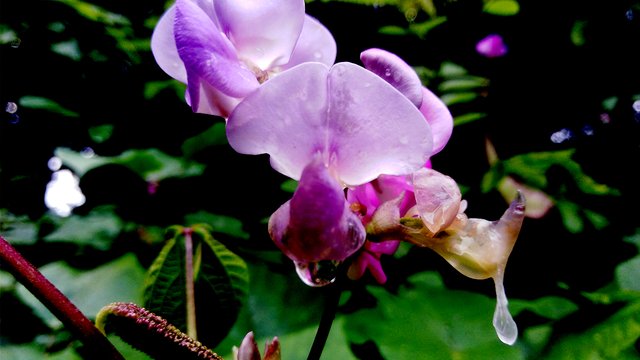Hyacinth bean vegetable plant for home garden
Experience the enchanting beauty of Hyacinth bean plants in your very own home garden. 🏡🌱 In this video, we take you on a visual journey to appreciate the lush foliage, vibrant flowers, and delicate tendrils of the Hyacinth bean plant. Immerse yourself in the stunning details and vibrant colors that make this vegetable plant a delightful addition to any garden. Discover the ornamental charm and potential culinary treasures of Hyacinth beans as we celebrate their grace and natural elegance." 🌸🌿🌼
Hyacinth bean, scientifically known as Lablab purpureus, is a versatile and fast-growing vegetable plant. It is often grown for its edible pods, leaves, and flowers. Here are some key points about the hyacinth bean vegetable plant:
Edible Parts: The hyacinth bean plant produces various edible parts, including young pods, leaves, and flowers. The pods are the primary edible part, and they are harvested while they are still tender.
Plant Appearance: The hyacinth bean plant is a twining vine with lush green foliage. It produces attractive purple flowers and long, slender pods.
Culinary Uses: The young pods of the hyacinth bean are often used in cooking. They have a slightly sweet and nutty flavor and can be used in various dishes, such as stir-fries, curries, and salads. The leaves and flowers are also used in some culinary traditions.
Nutritional Value: Hyacinth beans are a good source of protein, dietary fiber, vitamins (such as vitamin C), and minerals (including iron and potassium).
Growth Habit: This plant is a fast grower and can be used as a ground cover or allowed to climb on trellises and arbors. It is adaptable and can be grown in a variety of climates.
Sunlight and Soil: Hyacinth bean plants prefer full sun but can tolerate partial shade. They grow well in well-drained soil with organic matter.
Propagation: You can grow hyacinth beans from seeds, which are typically sown directly into the soil or started indoors and later transplanted.
Ornamental Value: In addition to its edible qualities, the hyacinth bean plant is often appreciated for its ornamental value, thanks to its vibrant flowers and lush foliage.
Companion Plant: Hyacinth beans are sometimes grown as a companion plant to other crops. Their twining growth habit can provide shade to other plants and help with weed suppression.
Potential Benefits: Some studies suggest that hyacinth beans may have certain health benefits, such as antioxidant and anti-inflammatory properties. However, it's important to cook them properly, as they contain compounds that can be toxic if not prepared correctly.
Hyacinth bean plants are a versatile addition to gardens, as they not only offer edible parts but also contribute to the overall aesthetics of the garden with their attractive appearance. They are particularly popular in many Asian and African cuisines.

Follow back please 🙏